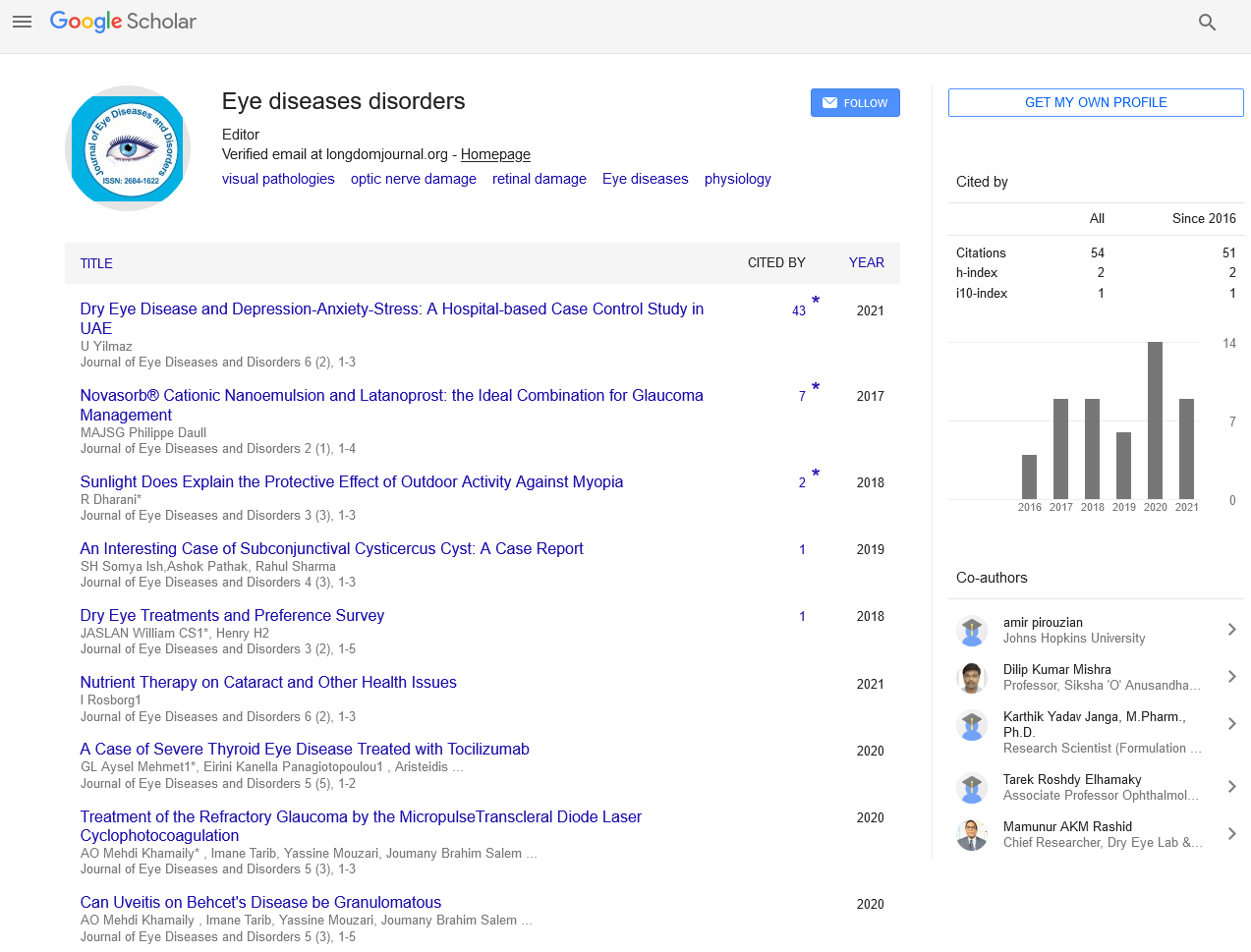Indexed In
- RefSeek
- Hamdard University
- EBSCO A-Z
- Geneva Foundation for Medical Education and Research
- Euro Pub
- Google Scholar
Useful Links
Share This Page
Journal Flyer
Open Access Journals
- Agri and Aquaculture
- Biochemistry
- Bioinformatics & Systems Biology
- Business & Management
- Chemistry
- Clinical Sciences
- Engineering
- Food & Nutrition
- General Science
- Genetics & Molecular Biology
- Immunology & Microbiology
- Medical Sciences
- Neuroscience & Psychology
- Nursing & Health Care
- Pharmaceutical Sciences
Abstract
Treatment of Mild Compressive Optic Neuropathy in Thyroid Eye Disease
Suzanne K. Freitag
Thyroid eye illness is an immune system problem that causes irritation, extension, and fibrosis of the extraocular muscles and connective tissue of the circle. The hidden pathogenic system has not been completely clarified however proof recommends inclusion of autoantibody-intervened upregulation of Thyroid Invigorating Chemical Receptor (TSHR) and insulin-like development factor receptor 1 (IGF-1R) complex in orbital fibroblasts.1 This phenotypically heterogenous sickness can prompt a scope of distorting and crippling visual appearances including proptosis, diplopia, and in its more extreme structure, Compressive Optic Neuropathy (CON). Conventional treatment alternatives for sight undermining TED-CON Incorporate Intravenous (IV) or oral corticosteroid treatment or careful orbital decompression, every one of which has variable adequacy in treatment and the potential for critical antagonistic results and complexities. Teprotumumab, a completely human monoclonal immunizer coordinated against IGF-1R, was as of late endorsed by the United States Food and Drug Administration (FDA) to address the requirement for a powerful and focused on clinical treatment for patients with TED. The teprotumumab randomized clinical preliminaries showed promising outcomes for the treatment of moderate and extreme TED; notwithstanding, patients with CON were rejected from the trials.4,5 In this report, we depict two instances of TED with gentle CON and normal Visual Field (VF) abandons that persevered in spite of IV corticosteroid treatment, however settled totally soon after inception of treatment with teprotumumab. The exploration in this original copy is agreeable with the Declaration of Helsinki and Health Insurance Portability and Accountability Act guidelines.
Published Date: 2021-05-22; Received Date: 2021-05-02

